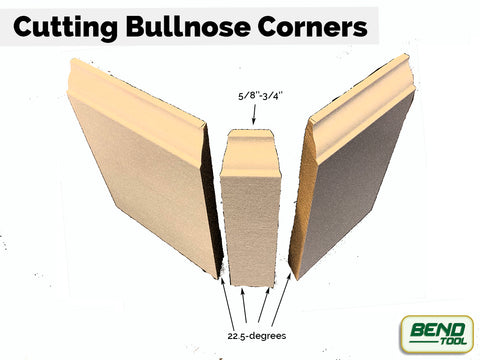
What Angle do you Cut Baseboards for Rounded Corners?
Cutting baseboard trim around bullnose corners involves additional cuts at different angles and an additional center piece to wrap around the corner connecting the two. In the end, you will have three pieces with four 22.5-degree cuts totaling 90-degrees.
In our article How Do You Cut Baseboards, we discussed the basics of getting setup.
To Start:
- Line up your outside boards to the wall and make your marks.
- Center piece: At your miter saw, cut a center piece (for a 90-degree corner, the inside will measure between 5/8’’- 3/4’’). Leaving your marks visible, the two outside cuts will be 22.5-degrees.
- Side Pieces: With your boards, make an inside cut a 22.5-degree angle on each while leaving your marks visible.
-
Mark your Baseboard Cuts
Using whatever method you prefer, mark your side pieces for cutting.
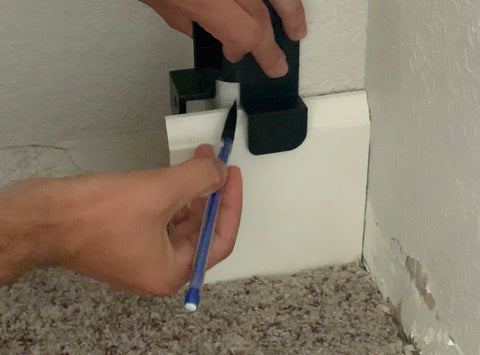
-
Setting your saw to 22.5-degrees
For your bullnose corners, all of your cuts (except for sizing the boards) will be at 22.5-degrees. Most miter saws can either bevel or rotate to configure this angle.
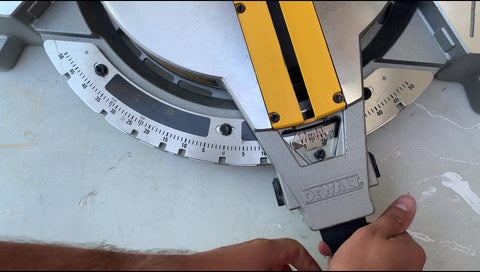
-
Cut your bullnose corner center piece
Be patient, this is a precise cut. Try making one good center piece and using it as your marker for future pieces.
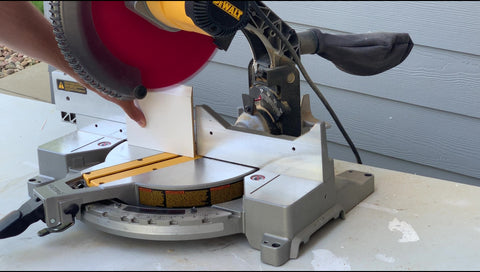
-
Bullnose Corner - Center piece
Your center piece will be small and feature to sides of 22.5 degree cuts.
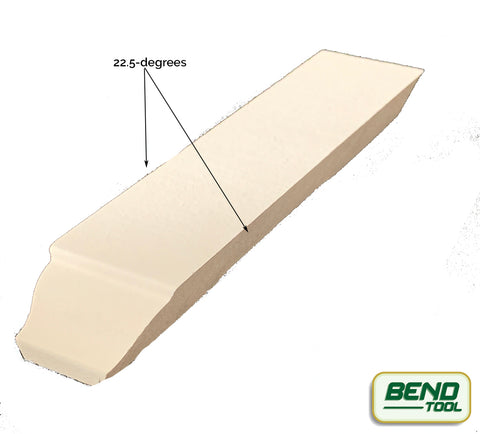
Pro-Tip: not all walls were made equally. Some corners are 91 degrees or 89 degrees, impacting the look and assembly of your cuts. We recommend using a digital angle finder to measure your angle and adding degrees when cutting to accommodate when it is 91 degrees or more.
Related Posts

Ever painted baseboards with a brush only to find you were left with some ugly brush marks? We talk about how to fix tha
Read More
Painting baseboards is not as straight forward as it may seem. We dive into some of the questions when determining wheth
Read More
We review different paints and sheens and make recommendations for baseboard paint based on your situation.
Read More
Options for painting baseboards with carpet, and a suggested process to follow.
Read More
A visual review of the miter and bevel settings and the different cuts for inside corners and outside corners.
Read More
A summary of different suggested heights and considerations based on flooring types.
Read More
← Older Post
Newer Post →












